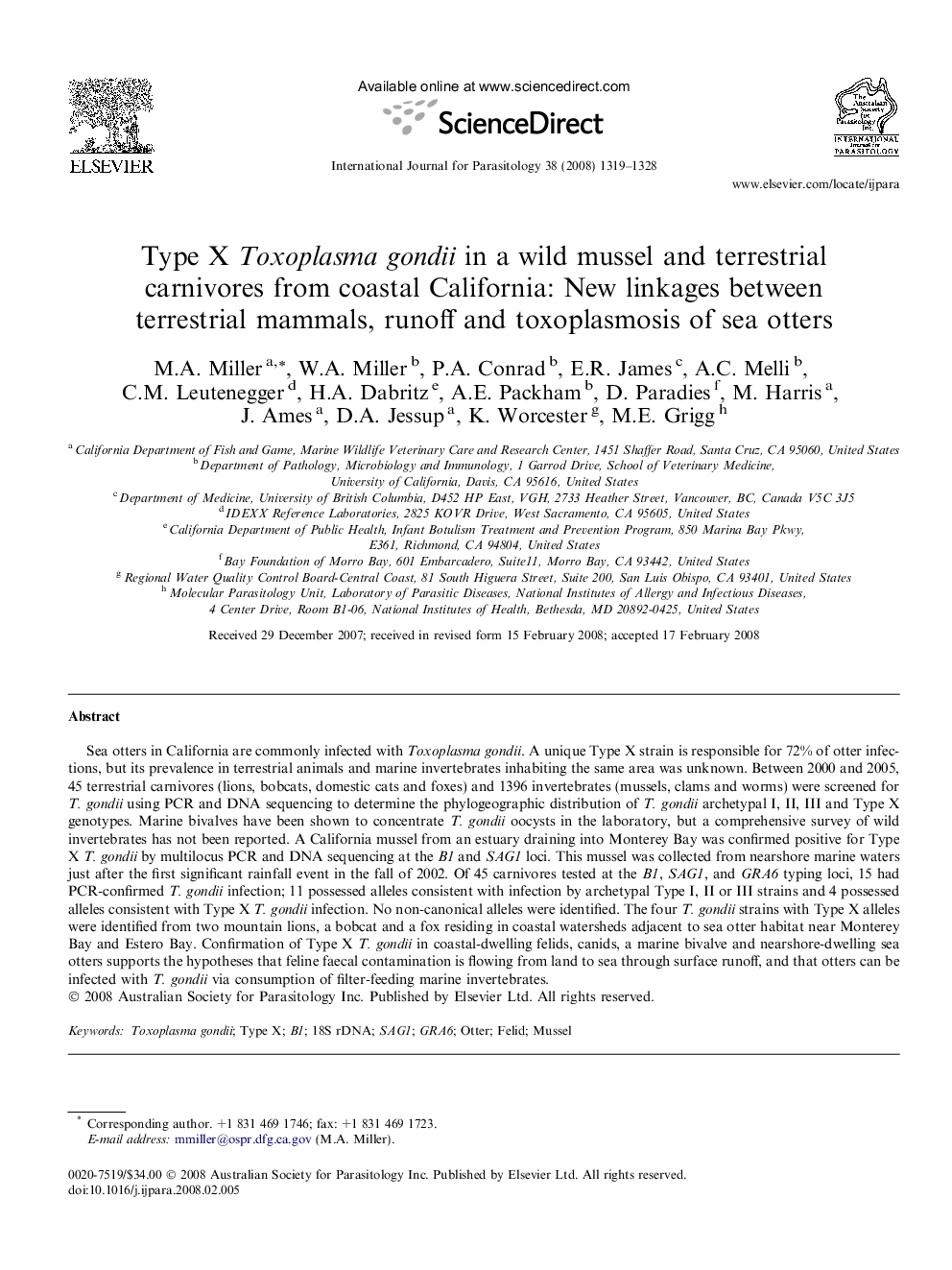| کد مقاله | کد نشریه | سال انتشار | مقاله انگلیسی | نسخه تمام متن |
|---|---|---|---|---|
| 2436423 | 1107308 | 2008 | 10 صفحه PDF | دانلود رایگان |

Sea otters in California are commonly infected with Toxoplasma gondii. A unique Type X strain is responsible for 72% of otter infections, but its prevalence in terrestrial animals and marine invertebrates inhabiting the same area was unknown. Between 2000 and 2005, 45 terrestrial carnivores (lions, bobcats, domestic cats and foxes) and 1396 invertebrates (mussels, clams and worms) were screened for T. gondii using PCR and DNA sequencing to determine the phylogeographic distribution of T. gondii archetypal I, II, III and Type X genotypes. Marine bivalves have been shown to concentrate T. gondii oocysts in the laboratory, but a comprehensive survey of wild invertebrates has not been reported. A California mussel from an estuary draining into Monterey Bay was confirmed positive for Type X T. gondii by multilocus PCR and DNA sequencing at the B1 and SAG1 loci. This mussel was collected from nearshore marine waters just after the first significant rainfall event in the fall of 2002. Of 45 carnivores tested at the B1, SAG1, and GRA6 typing loci, 15 had PCR-confirmed T. gondii infection; 11 possessed alleles consistent with infection by archetypal Type I, II or III strains and 4 possessed alleles consistent with Type X T. gondii infection. No non-canonical alleles were identified. The four T. gondii strains with Type X alleles were identified from two mountain lions, a bobcat and a fox residing in coastal watersheds adjacent to sea otter habitat near Monterey Bay and Estero Bay. Confirmation of Type X T. gondii in coastal-dwelling felids, canids, a marine bivalve and nearshore-dwelling sea otters supports the hypotheses that feline faecal contamination is flowing from land to sea through surface runoff, and that otters can be infected with T. gondii via consumption of filter-feeding marine invertebrates.
Journal: International Journal for Parasitology - Volume 38, Issue 11, September 2008, Pages 1319–1328